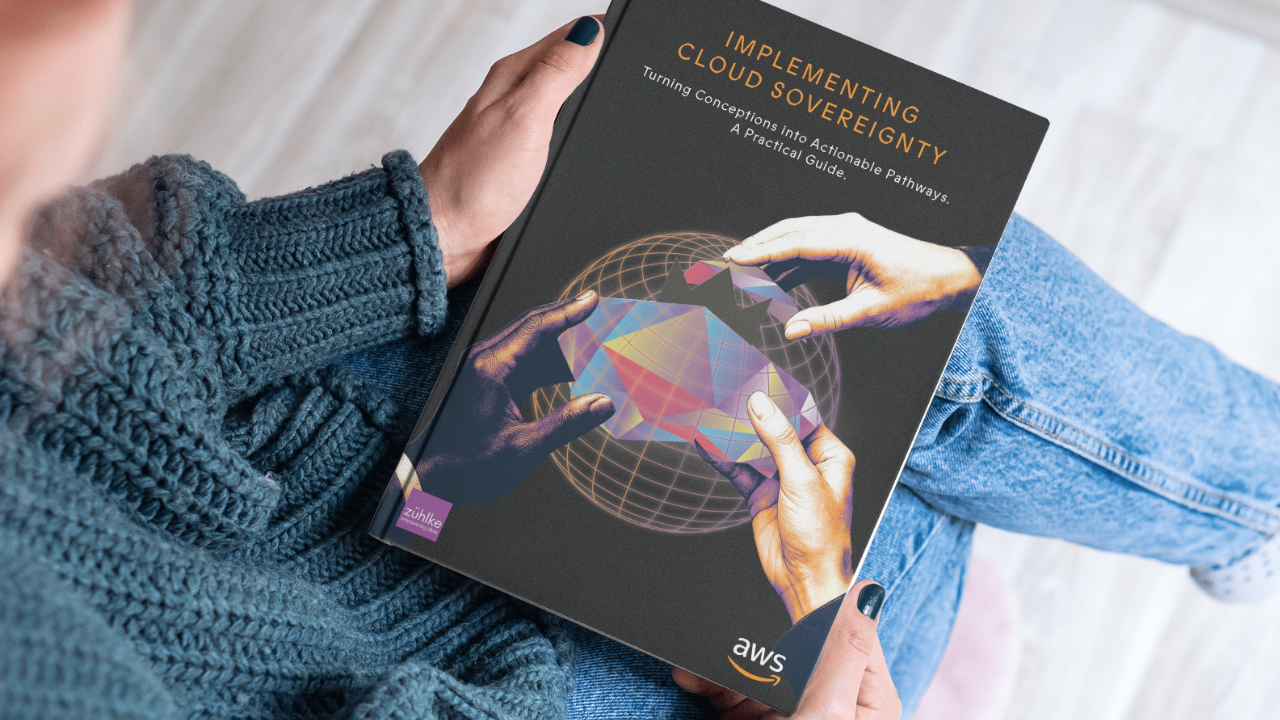The headline-grabbing promise of new technology often has to bump up against the reality that implementing anything new into existing workflows takes time, money and resources.
AI is no different; its potential to transform pharmaceutical manufacturing is well-documented, but it’s a potential that relies on rebooting ingrained processes and, crucially, unlocking the capital to do so.
In Zühlke’s position as digital consultants and enablers, there are a number of key challenges in this space that we’re keenly aware of:
- How can organisations free up investments from other parts of their businesses?
- What efficiencies can we work towards to enable new digital transformation?
- How can we navigate the sector’s current pressures to enable real change?
To explore answers to these burning questions, we hosted a panel with some of the industry’s most forward-thinking minds as part of 2025’s World Health Summit.
Speaking with Lisa Bonadonna of the African Vaccine Manufacturing Initiative (AVMI); Eli Lilly’s Head of Public Policy & Regulatory Law Josh O’Hara; and Fresenius Kabi President of Pharma, Nutrition, and Sustainability, Marc-Alexander Mahl, Zühlke’s Chief Health Officer Dr Angeli Möller chaired a discussion how AI can realistically aid – and inform – tomorrow’s pharma manufacturing industry.
Here’s what we learned…

AI on the shop floor
AI’s proliferation across the sector is obviously a hot topic. But finding exactly where it can best slot into existing processes is an ongoing exploration. In the near-term, AI wins are frequently being had on the shop floor – with machine learning and generative AI tools being put to use in areas like predictive maintenance, yield optimisation, planning and supply.
“Companies we work with around the globe,” says Angeli, “are now having to look at how they implement artificial intelligence in their supply chain and in their manufacturing.”
A common theme here is feeling the pressure to innovate in a competitive landscape. The conversation touched on the fact that even traditionally non-technical departments, such as legal and compliance, are now being encouraged to explore AI initiatives. Marc suggests that achieving this is now seen as a low bar in the wider remit of improving global healthcare outcomes:
“Having the right products in the right time, at the right quantity and quality requires investment in talent, modern AI-based and digital forecasting tools, production planning tools, and supply chain tools to make sure that you’re as efficient as possible in your production planning and material usage.”
Naturally, this is all a boon for the supply chain, an area that was put under an incredibly hot spotlight during COVID-19, and again amid the rapid-fire exchange of global tariffs. There’s a sense here, then, that AI efficiencies can – and are – helping businesses not only proactively plan for ‘normal’ business environments, but for extreme ones as well.
In other words, AI in pharma manufacturing is, first and foremost, an operations engine – rather than AI being used to invent new paradigms, businesses are feeling the benefits when they start where data already exists, and for everyday use cases with measurable results.
But, while some industry leaders have already seen AI-driven efficiencies in everything from workforce planning to drafting regulatory documentation, others are later to the game. “And now,” says Angeli, “they have to somehow unlock the capital to quickly catch-up.”
Which brings us onto the big challenge: making AI deployable at scale. The answer, as it turns out, is to think about the link between supply chain efficiencies and in-house workflows.
Three steps to AI enablement
As we’ve experienced in our own work internally and with clients, moving beyond pilot projects to full scale AI use – in any industry – is a leap that requires careful planning and top-to-bottom buy-in. “In Pharma, one of the biggest challenges is trying to get harmonised data across the multiple manufacturing sites,” Angeli says, summing up the roadblocks. “Sites are built at different times, so trying to retroactively make sure you’ve enabled data sharing – even within the same company – is one of the first challenges that we face.” The solution – and the road to wider AI adoption – could come from offloading existing supply chain strains and complexities to free up innovation funds. And this can be achieved through a few key mindset shifts:
1. Audit and align your data
Throughout the discussion, our panel mentioned the importance of platform-first thinking and the challenges that arise from cross-site data living in silos. In truth, the limiting factor in AI deployment often isn’t in algorithmic quality; it’s a lack of unilateral, validated data across plants and partners. Auditing data pipelines and building common layers and processes is the difficult, boring stuff, but it’s an essential first step.
Part of this is scaling AI using readily approvable frameworks. “We want to use WHO pre-qualification standards,” says Lisa, discussing the ways that the African Vaccine Manufacturing Initiative is looking to bolster manufacturing processes (she explains that only 1% of the vaccines needed in the continent are currently made there).
2. Foster a pre-competitive ecosystem
Common supply chain concerns centre on the risk of overly siloed, centralised ways of working. The discussion highlighted that decentralising supply chains is a key factor in improving resilience. So, while a high percentage of materials and APIs are now coming from China and India, there ought to be a wider effort to decentralise and show visible capacity through data ecosystems.
It’s here we found unity on what a ‘pre-competitive’ ecosystem might look like from both Lisa and Marc: “We represent 25 manufacturers,” Lisa explains. “Not everybody can do everything – it makes no sense to and is not a good use of resources.
“Instead, we have frontrunner technologies and frontrunner organisations; of the 25 we have three frontrunners who are more advanced than some of our other colleagues. But we’re working on making sure that our members have a shared blueprint that they're working towards, designed by a group within Africa CDC.”
Marc, meanwhile, compares this information sharing to the aviation industry: “If you want to derisk the supply chain,” he says, “then you need to create an environment where you regionalise capabilities, competencies and capacities – not only for single molecules or single technologies, but for all of them. If you leave this to single companies – and everyone invests just in the interesting things – you will reduce choice and supply.
“One idea is to building regional capacity for key medicines through an industry-led network, with coordinated investment in essential API starting materials across Europe or the US. This collaboration among pharmaceutical manufacturers would strengthen local supply, increase resilience and cut dependency, similar to Airbus's successful cooperative approach.”
3. Choose your partners wisely
The panel agreed that collaboration is critical to scaling AI capabilities. While many organisations have growing in-house expertise, they often rely on technology partners to fill capability gaps and accelerate implementation.
But choosing vendors and partners needs to be done carefully. “Procurement is policy,” Marc says, “and procurement needs to support different criteria than just lowest price.”
The good news is that, when it comes to both supply chain risk management and AI deployment, partnerships are a great way to derisk. Manufacturers should look for partners that offer data flexibility, with on-premises and hybrid model options alongside ongoing validation support.
There’s a balance to strike here: the need to play in these emergent data ecosystems and the need to keep AI models in-house, so as to avoid lock-in that blocks multi-site scale.
Outcomes that matter
What we’ve explored in this panel is the link between the wider geopolitical landscape, manufacturing resilience and technological transformation – where a strong, ecosystem-driven supply chain offers efficiencies and capacity to enable new ways of working. AI included.
“We do all of this work,” says Angeli, “so that we can reduce the cost of the medicines, reducing the time to market as well as increasing the yield – and being able to serve more patients globally.”
That’s the goal worth remembering here; any tech transformation needs to be in service of making it easier for patients to get medicines and therapeutics they need.
So, while being competitive makes rock-solid business sense, bringing AI-enabled efficiencies into the fold can actually be a win-win if it results in pharmaceutical manufacturers achieving that top-level aim. Or, as Marc puts it: “Competitiveness is key, so that we can provide advantages to healthcare systems.”
To move from pilots to production, the agenda is clear: partner with the right people, and you’ll build resilience into the macro and the micro. For a practical take on the future of AI in pharma, read Zühlke’s industry report:









